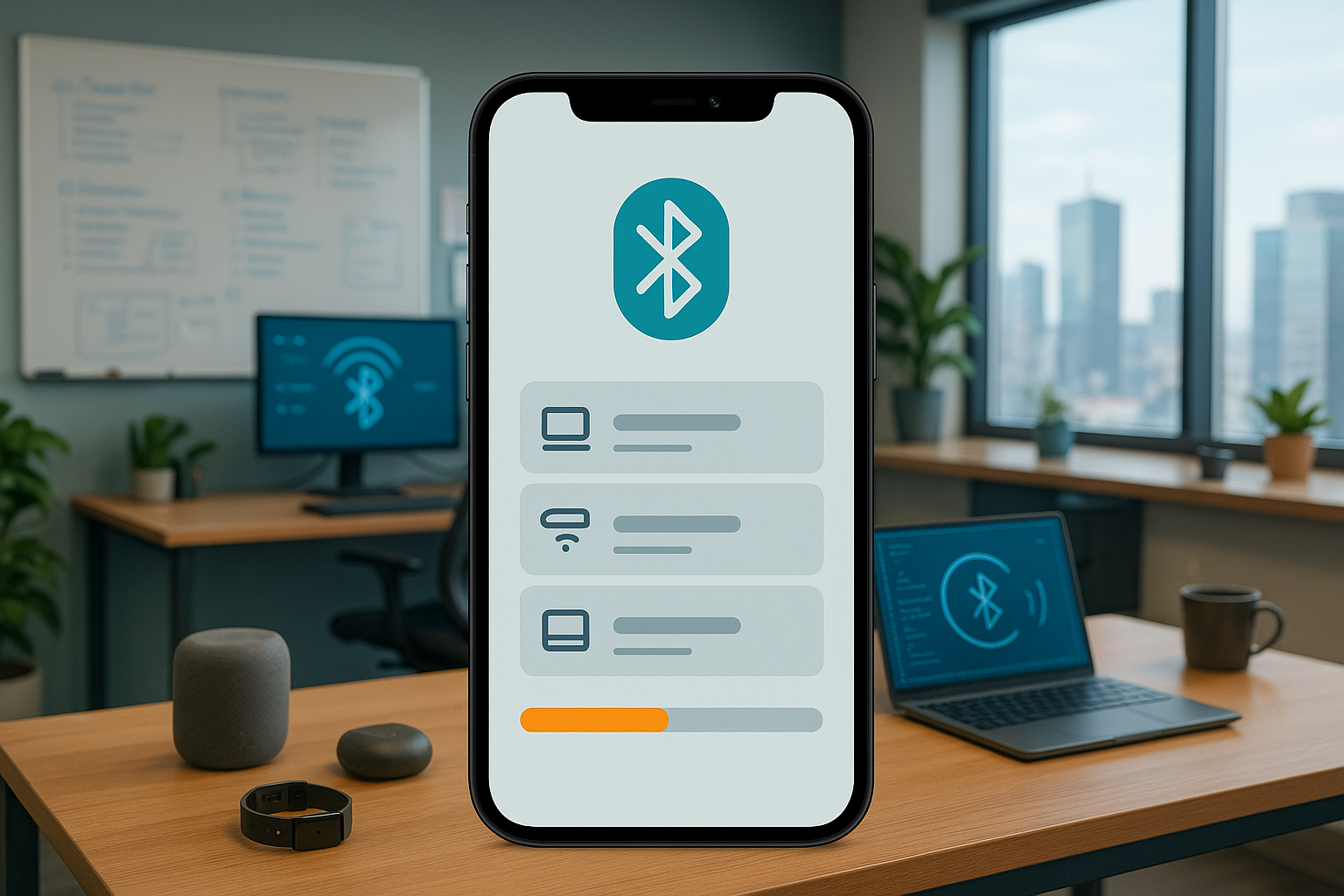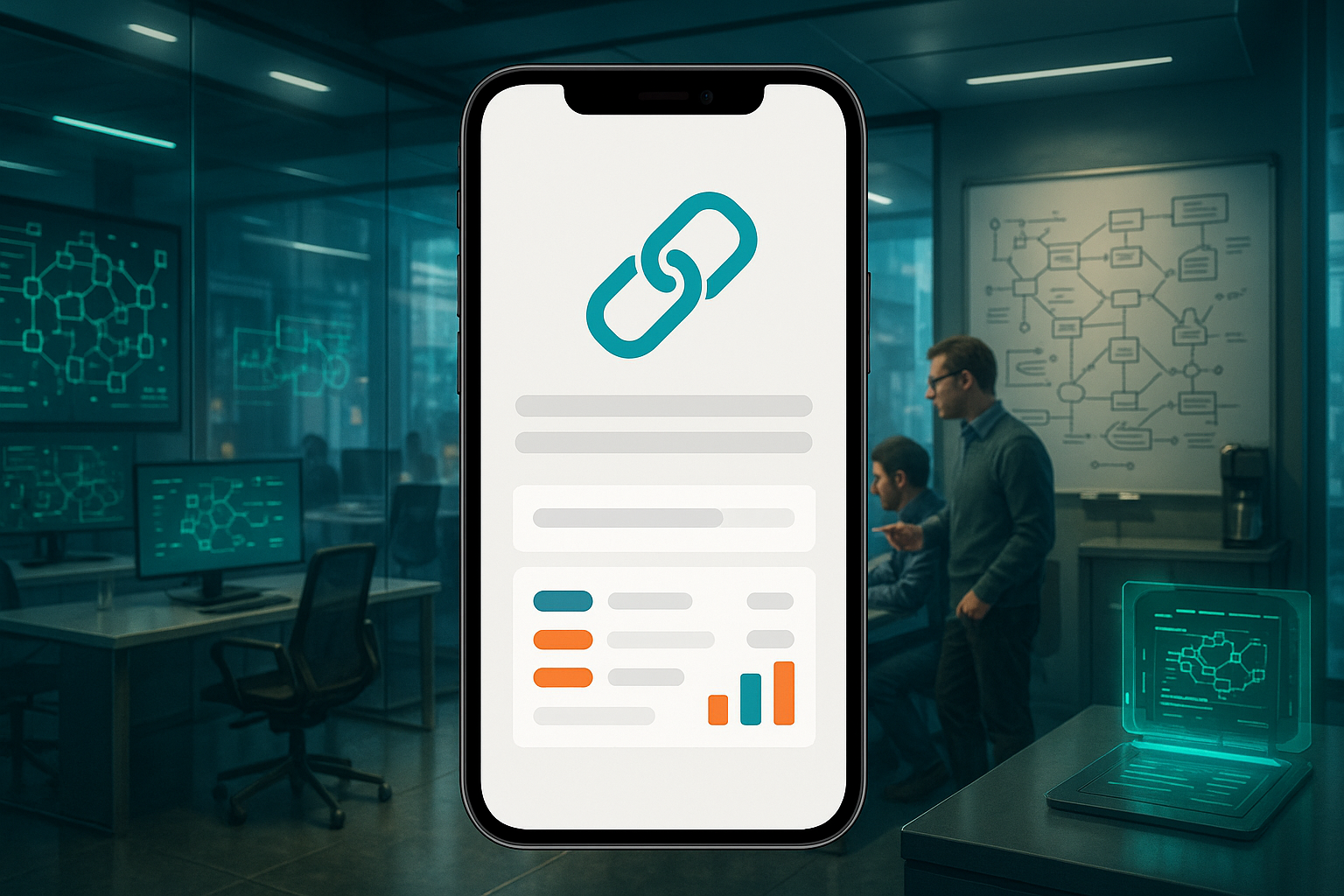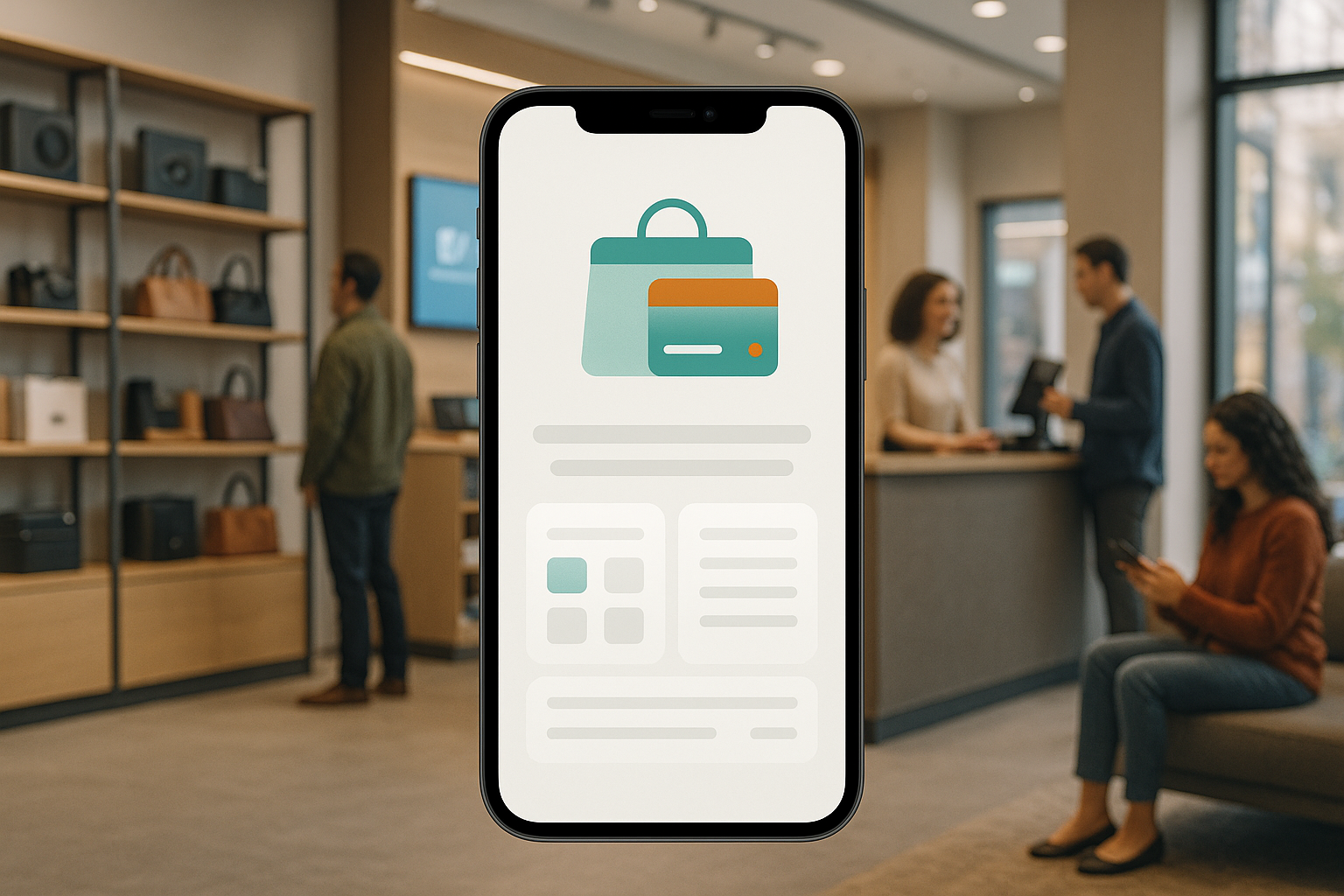Introduction
Bluetooth technology has become an invisible, yet indispensable, part of our daily lives. From the headphones streaming our favorite podcasts to the medical devices monitoring vital signs, this wireless standard has unlocked a world of connectivity. For businesses and innovators, this presents a massive opportunity to create products that bridge the physical and digital worlds. However, venturing into Bluetooth app development is not for the faint of heart. The path is littered with technical complexities that can quickly overwhelm even experienced software teams. Issues with connection stability, platform-specific permission handling, data fragmentation, and the sheer difficulty of testing can turn a promising project into a frustrating and costly endeavor.
This article serves as a comprehensive guide to the world of Bluetooth app development. We will demystify the technology, explore what constitutes a Bluetooth app, and dive deep into the specific challenges that make in-house development so difficult. We will also outline the different types of Bluetooth applications, provide insight into development costs, and introduce the top companies that specialize in this niche.
At MetaCTO, we have spent two decades transforming complex ideas into successful mobile applications. As a top US AI-powered app development firm, we possess deep expertise in navigating the intricacies of Bluetooth integration. We understand that creating a seamless connection between an app and a piece of hardware is both an art and a science. Throughout this guide, we will share insights gleaned from over 120 successful projects, demonstrating how partnering with a seasoned expert like us can help you avoid common pitfalls and bring your vision to market faster and more effectively.
What is a Bluetooth App?
At its core, a Bluetooth app is a mobile application designed to communicate directly with one or more hardware devices using Bluetooth technology. These applications act as a control panel, a data receiver, or a central hub, enabling a smartphone or tablet to interact with the world around it in a meaningful way. The function of these apps can range from simple data transfers to orchestrating complex networks of interconnected devices.
The scope of Bluetooth applications is vast and continues to expand. Consider these common use cases:
- Audio Streaming: Perhaps the most familiar use case, Bluetooth technology excels at streaming high-quality audio between a smartphone and a wireless speaker or headphones. The app on the phone manages the connection, playback controls, and equalization settings.
- Data Transfer: In the healthcare and wellness sectors, Bluetooth apps are critical. They facilitate the secure transfer of data between a patient’s tablet or smartphone and a medical device, such as a glucose monitor or blood pressure cuff. This allows for real-time tracking and analysis of health metrics.
- Large-Scale Networks: Beyond simple one-to-one connections, Bluetooth can create vast networks. In modern building automation solutions, an app can send messages and commands between thousands of nodes, controlling lighting, climate, and security systems throughout an entire facility.
Essentially, a Bluetooth app is the software layer that unlocks the potential of a hardware product. It provides the user interface, the logic for data processing, and the bridge for communication, turning a standalone gadget into an integrated part of a user’s digital ecosystem.
Reasons That It Is Difficult to Develop a Bluetooth App In-House
While the end-user experience of a well-made Bluetooth app feels effortless, the underlying development process is extraordinarily complex. Building a robust and reliable Bluetooth application requires a specialized skill set that goes far beyond standard mobile app development. Teams that underestimate these challenges often face significant delays, budget overruns, and a subpar final product.
Here, we break down the most significant hurdles that make in-house Bluetooth development so difficult.
Challenge 1: Connection and Discovery Management
Simply establishing and maintaining a connection to a Bluetooth device is fraught with challenges. This initial phase of communication is where many projects first stumble.
- Permissions and State Transitions: Operating systems like iOS require the app to explicitly request permission from the user to access Bluetooth functionalities. This introduces a layer of complexity in managing the app’s behavior based on whether permission is granted, denied, or revoked. Developers must build a resilient system that can handle these different Bluetooth state transitions gracefully without crashing or confusing the user.
- Device Discovery and Filtering: In a world crowded with wireless signals, scanning for all nearby BLE devices can return a deluge of data. A significant challenge is discovering the right peripheral among a sea of irrelevant ones. An effective app must implement sophisticated filtering logic to ignore other people’s headphones, fitness trackers, and smart home devices to focus only on the peripherals it is designed to control.
- Connection Stability: Establishing a stable connection is not instantaneous and can take a considerable amount of time. Furthermore, these connection attempts can fail for numerous reasons beyond the developer’s direct control, including radio signal interference, network issues, or the state of the peripheral itself (e.g., low battery, out of range).
- Disconnection Handling: BLE connections are not always permanent and may be dropped unexpectedly. A robust application must be able to detect these disconnections immediately and implement a smart, non-intrusive reconnection strategy to restore functionality without frustrating the user.
Challenge 2: Data Communication and Handling
Once a connection is made, the next set of challenges revolves around the exchange of data. The nature of Bluetooth Low Energy (BLE) communication introduces several layers of complexity.
- Service and Characteristic Discovery: BLE devices organize their functions into “services” and “characteristics.” However, depending on the device’s firmware, these services and characteristics may be hidden or non-standard. The discovery process can be time-consuming, and the app must be built to handle potential delays and timeouts gracefully.
- Handling Characteristic Properties: Each BLE characteristic has different properties—such as read, write, or notify—that dictate how the app can interact with it. Developers must handle each of these properties correctly. For example, subscribing to a “notify” characteristic allows the peripheral to send updates to the app asynchronously. Managing these subscriptions and incoming data streams requires careful architectural planning.
- Background Processing and Notifications: One of the most difficult aspects of BLE development is handling data when the app is not in the foreground. Receiving notifications from a peripheral in a timely and efficient manner while the app is running in the background is a significant challenge. iOS, for instance, requires specific configurations, entitlements, and adherence to strict background execution rules to ensure data is received reliably when the app is not active.
- Data Integrity and Fragmentation: Communication over BLE is packet-based. Due to the limited payload size of these packets, any large piece of data must be broken up into smaller chunks before being sent. This means the receiving application is responsible for reassembling these fragmented or potentially incomplete packets in the correct order to reconstruct the original data. This process, known as data serialization and deserialization, adds a substantial layer of complexity and a potential source of bugs.
- Data Transfer Limitations: BLE is designed for low energy consumption, not high-speed data transfer. The technology has inherently limited data transfer rates and small payload sizes. Developers must be acutely aware of these limitations and design their communication protocols accordingly, which can complicate the overall communication architecture.
Challenge 3: Testing and Hardware Dependency
Unlike pure software applications, Bluetooth apps cannot be fully tested in a simulator. This dependency on physical hardware creates a significant bottleneck in the development and quality assurance process.
- Requirement for Physical Devices: Thoroughly testing BLE functionality is nearly impossible without access to the actual physical devices the app is meant to interact with. This includes not just the target peripheral but also a range of smartphones and tablets to account for variations in Bluetooth chipsets and operating system versions.
- Difficulty in Simulating Interactions: Simulating the nuances of BLE peripherals—including connection drops, data packet loss, and varying signal strengths—is incredibly difficult. Testing complex interactions and edge cases often requires real hardware and testing in diverse, real-world environments to uncover issues that would never appear in a controlled lab setting.
Partnering with an experienced firm like MetaCTO mitigates these risks. Our team has spent years building reusable frameworks and best practices specifically for these challenges. We have deep experience in handling iOS and Android permission flows, implementing robust connection and reconnection logic, and designing efficient data transfer protocols. Our custom mobile app development process includes rigorous testing with a wide array of physical hardware, ensuring your app is reliable and performs flawlessly in the real world.
Different Types of Bluetooth Apps
While users may not see the distinction, the world of Bluetooth is primarily split into two different technologies: Bluetooth Classic and Bluetooth Low Energy (BLE). The choice between them depends entirely on the application’s needs, and it fundamentally shapes the app’s architecture and capabilities.
Bluetooth Classic Applications
Bluetooth Classic is the technology most people are familiar with, even if they do not know it by name. It is designed for applications that require a continuous, relatively high-bandwidth wireless connection.
Its primary use case is enabling wireless audio streaming. In fact, Bluetooth Classic has become the de facto standard radio protocol behind the vast majority of:
- Wireless Speakers
- Wireless Headphones
- In-Car Entertainment Systems
Beyond audio, Bluetooth Classic is also well-suited for other data transfer applications where power consumption is less of a concern than throughput, such as enabling wireless mobile printing from a smartphone or laptop.
Bluetooth Low Energy (BLE) Applications
Bluetooth Low Energy, or BLE, was introduced as part of the Bluetooth 4.0 specification and, as its name suggests, is optimized for very low power consumption. This makes it ideal for devices that need to run for months or even years on a small battery. BLE is the cornerstone of the Internet of Things (IoT).
BLE is widely used as a device positioning technology, addressing the increasing market demand for high-accuracy indoor location services. It enables one device to perform several key functions:
- Determine the presence of another device (proximity).
- Determine the distance to another device (ranging).
- Determine the direction of another device (direction finding).
This has made BLE the technology of choice for asset tracking, indoor navigation, and proximity-based marketing. Furthermore, emerging technologies like Bluetooth Channel Sounding are poised to build on these capabilities, bringing true, high-precision distance awareness to billions of connected devices and opening up new possibilities for secure, location-aware applications.
Cost Estimate for Developing a Bluetooth App
Determining the precise cost of a mobile app is complex, but one factor is certain: integrating hardware features significantly increases the price. As one technology analysis notes, “Many apps will make use of the device’s hardware elements such as bluetooth, NFC technology, camera… and many others. These features will require extra skills from the app developers, racking up a higher cost in mobile app development.”
The increased cost for Bluetooth app development is a direct result of the challenges discussed earlier. It is not merely about adding a few lines of code; it is about hiring developers who possess a rare and specialized skill set. These engineers must be proficient in:
- Low-level communication protocols.
- Platform-specific APIs for both iOS and Android.
- Data serialization and error handling.
- Asynchronous programming and background processing.
- Hardware debugging and testing.
These extra skills command a premium. Furthermore, the development timeline is often longer due to the iterative nature of testing with physical hardware. Debugging an issue that only occurs when the peripheral’s battery is below 20% and the user is 15 feet away is far more time-consuming than fixing a standard UI bug.
However, viewing this as a simple cost increase is shortsighted. The real risk lies in attempting to build a Bluetooth app without this expertise. An inexperienced team may spend months struggling with connection stability or data corruption, burning through the budget with little to show for it. The result is often a failed project or a product launch that is plagued by negative reviews from frustrated users.
Investing in an expert development partner like MetaCTO is an investment in efficiency and risk mitigation. Our proven processes and deep experience allow us to accurately scope projects, anticipate challenges, and build robust solutions from day one. For startups and businesses looking to test a concept without a massive upfront investment, our Rapid MVP Development service is an ideal solution. We can help you launch a functional, Bluetooth-enabled minimum viable product in as little as 90 days, allowing you to validate your idea with real users and control costs effectively.
Top Bluetooth App Development Companies
Choosing the right development partner is the single most important decision you will make when building a Bluetooth-enabled product. You need a team that not only understands mobile development but also has proven, hands-on experience with the unique challenges of hardware integration.
1. MetaCTO
As a leading US-based AI-powered mobile app development agency, we at MetaCTO stand at the forefront of Bluetooth innovation. With over 20 years of app development experience and more than 120 successful projects launched, we have cultivated a deep, specialized expertise in creating seamless and reliable Bluetooth applications. Our 5-star rating on Clutch is a testament to our commitment to excellence and client success.
What truly sets us apart is our holistic approach. We are not just coders; we are strategic partners who are with you at every step of the journey, from initial concept to launch and beyond. Our services encompass the full product lifecycle:
- Validate: We turn your idea into a market-ready MVP quickly, helping you test your assumptions and secure funding.
- Build: We handle the entire development process, from UI/UX design to backend engineering, ensuring a polished and stable product. Our expertise in AI and computer vision, as demonstrated in our work with G-Sight, allows us to build cutting-edge features that set your app apart.
- Grow & Monetize: We use data-driven strategies to optimize user acquisition, engagement, and retention, helping you build a loyal customer base and turn your app into a profitable venture.
Our team has solved the toughest Bluetooth challenges for clients across various industries. We have architected complex data synchronization protocols, perfected background processing on iOS and Android, and built robust testing suites with real hardware. When you partner with us, you are not just hiring developers; you are gaining access to two decades of hard-won knowledge and a team dedicated to making your project a success.
2. TechnoYuga Soft Pvt. Ltd.
TechnoYuga Soft Pvt. Ltd. is another capable firm in the mobile development space. They have demonstrated their competence in the field through their work for a medical device manufacturer. In this project, they developed a React Native mobile app that successfully connects with the client’s medical equipment via Bluetooth, ensuring the secure management and transfer of sensitive patient data. This project showcases their ability to handle critical Bluetooth integrations in the highly regulated healthcare sector.
Conclusion
The journey of developing a Bluetooth application is one of immense potential tempered by significant technical difficulty. While the promise of connecting your product to a user’s digital life is compelling, the path is laden with challenges, from managing fickle connections and platform-specific permissions to handling fragmented data and the logistical hurdles of hardware testing. As we have explored, these complexities demand a level of expertise that goes far beyond traditional app development, impacting everything from the project timeline to the final cost.
This guide has illuminated the core aspects of this specialized field. We have defined what a Bluetooth app is, detailed the formidable reasons why in-house development is so challenging, distinguished between Bluetooth Classic and BLE applications, and provided a realistic perspective on the associated costs.
Successfully navigating this landscape requires more than just code; it requires a strategic partner with a proven track record. At MetaCTO, we have spent 20 years mastering the art and science of mobile app development, with a special focus on complex integrations like Bluetooth and AI. Our history of over 120 successful projects is built on a foundation of deep technical knowledge, rigorous testing, and a commitment to transforming our clients’ visions into market-leading products.
If you are ready to build a Bluetooth-enabled app and want to ensure it is done right from day one, avoid the common pitfalls that derail so many projects.
Talk with a Bluetooth expert at MetaCTO today to integrate powerful connectivity into your product with a partner you can trust.






